

Abstract
This is a part of a wider research I’m working on. I going to examine how The Blurve algorithm works on a big spectrum of radius and resolution.
‘Blurve’ is a combination of two words: blur and curve. That is because the graphics I generate are result of combination of different radiuses and amount of gaussian blur and color profile curves, that replace particular tones into other tones ( in this one it replace all grey tones from 0 to 255 to black or white depends on if the tone have even or odd number).
Chapter 1
The first chapter of the long version of The Blurve animation contains RGB transformation. The base image is the RGB color range square (256x256), that is synthesized by averaging the ten progressively located in modular division sequence by four rectangular areas.



It is transformed with The Blurve on 10 levels of resolution ( 2x2, 4x4, 8x8, 16x16, 32x3266, 64x64, 128x128, 256x256, 512x512, 1024x1024) and 10 levels of gaussian blur radius ( 0,2, 0,4, 0,8, 1,6, 3,2, 6,4, 12,8, 25,6, 51,2, 102,4 ).
The blurved image is more dynamic at the beginning and it stops moving when every next step is not changing the result. Depends on image, resolution and blur radius The Blurve will produce different amount of steps ( frames/generations ).
The beginning part of the whole sequence, that is shown in this version (‘The Blurve’ - test release) is only first 20 transformations from chapter 2.The Blurved image is more dynamic at the beginning and it stops moving when every next step is not changing the result. Depends on image, resolution and blur radius The Blurve will produce different amount of steps ( generations ).
The base image for chapter 2 is a combination of 100 squares referring to the 100 transformations from chapter 1. Each has a grey tone depended on amount of steps (generations) of transformation, that it refers.
Radius is changing getting bigger by 0,1 pixel per transformation, starting from 0,1. With this change goes a change of the 2nd base image resolution, starting from 10x10 pixels. Each next transformation starts with the result image of the previous, scaled comply with the order and cropped to 1024x1024pixels.
Because whole work area is limited some result images are not able to change ( solid image ) or its transformation will result the same type of pattern over and over again ( when image is composed only with vertical or horizontal stripes).
This exclude research transformation of next radius and resolution levels. In this such case transformation starts again from the 2nd base image, but with resolution comply with the order.
The beginning part of the whole sequence, that is shown in this version (‘The Blurve’ - test release) is only first 20 transformations from chapter 2.
The Blurved image is more dynamic at the beginning and it stops moving when every next step is not changing the result. Depends on image, resolution and blur radius The Blurve will produce different amount of steps ( generations ).The base image for chapter 2 is a combination of 100 squares referring to the 100 transformations from chapter 1. Each has a grey tone depended on amount of steps (generations) of transformation, that it refers.
Radius is changing getting bigger by 0,1 pixel per transformation, starting from 0,1. With this change goes a change of the 2nd base image resolution, starting from 10x10 pixels. Each next transformation starts with the result image of the previous, scaled comply with the order and cropped to 1024x1024pixels.
Because whole work area is limited some result images are not able to change ( solid image ) or its transformation will result the same type of pattern over and over again ( when image is composed only with vertical or horizontal stripes).
This exclude research transformation of next radius and resolution levels. In this such case transformation starts again from the 2nd base image, but with resolution comply with the order.
The beginning part of the whole sequence, that is shown in this version (‘The Blurve’ - test release) is only first 20 transformations from chapter 2.
Chapter 2
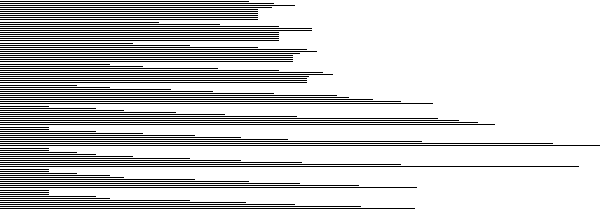
The base image for chapter 2 is a combination of 100 squares referring to the 100 transformations from chapter 1. Each has a grey tone depended on amount of steps (generations) of transformation, that it refers.

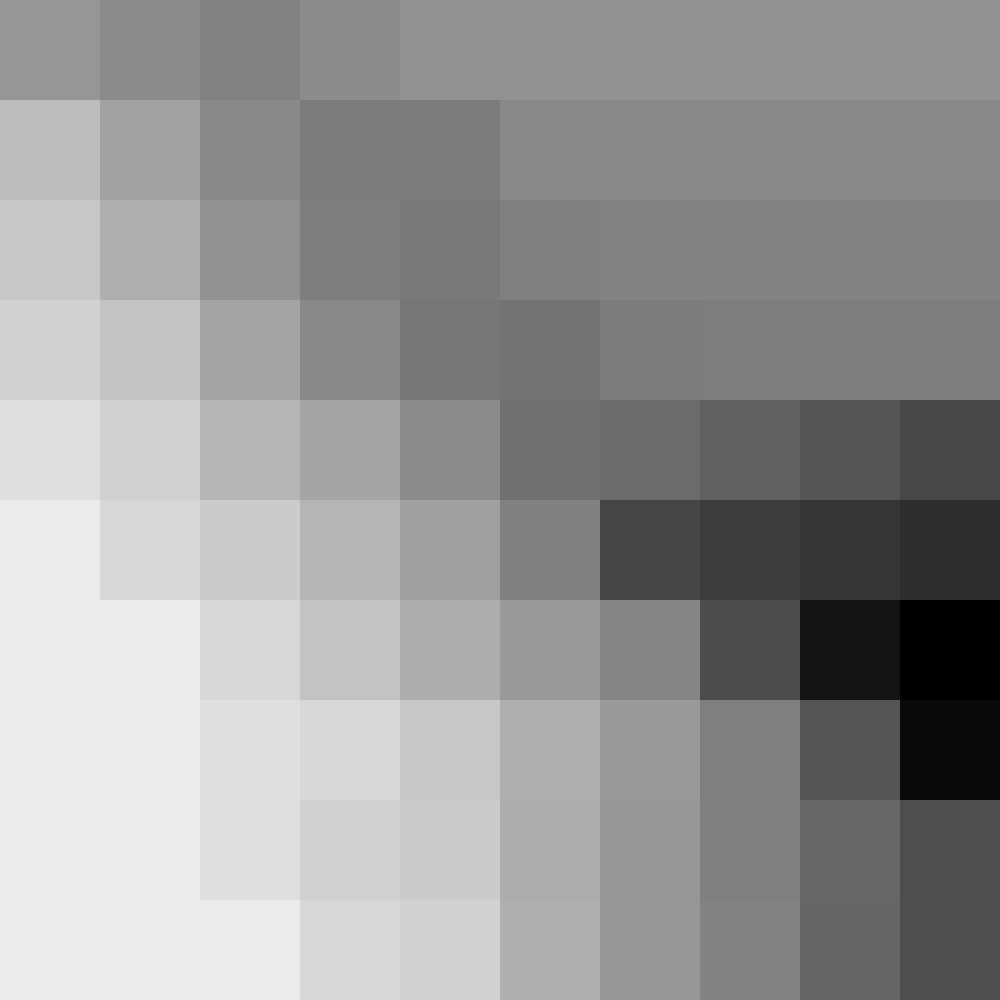
Radius is changing getting bigger by 0,1 pixel per transformation, starting from 0,1. With this change goes a change of the 2nd base image resolution, starting from 10x10 pixels. Each next transformation starts with the result image of the previous, scaled comply with the order and cropped to 1024x1024pixels.
Because whole work area is limited some result images are not able to change ( solid image ) or its transformation will result the same type of pattern over and over again ( when image is composed only with vertical or horizontal stripes).
This animation excludes transformation of next radiuses above 2,0 pixels and resolution levels above 2000%. In this case such it starts again from the 2nd base image, but resolution is in accordance with the order.
Screen shots

chapter2.1_radius000,9pix_frame_0of141_croped_to_600x600pix
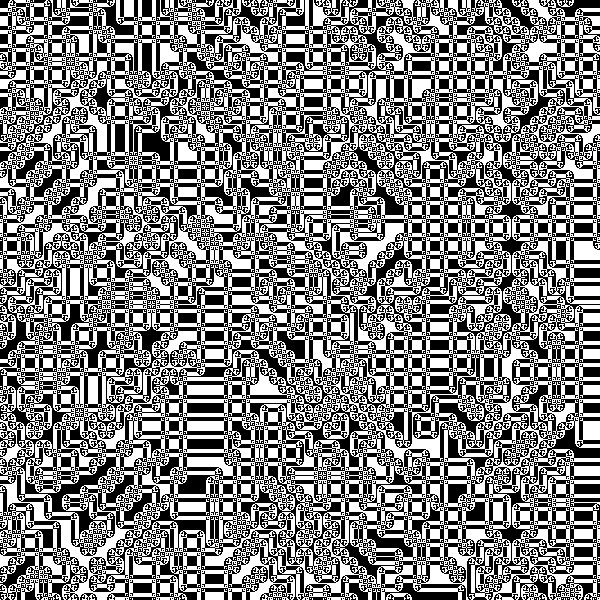
chapter2.1_radius000,9pix_frame_3of141_croped_to_600x600pix

chapter2.1_radius000,9pix_frame_12of141_croped_to_600x600pix

chapter2.1_radius000,9pix_frame_141of141_croped_to_600x600pix
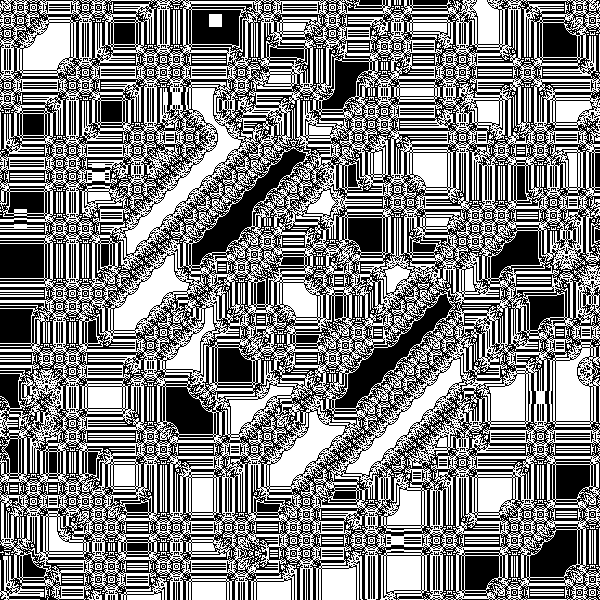
chapter2.1_radius001,3pix_frame_5of494_croped_to_600x600pix
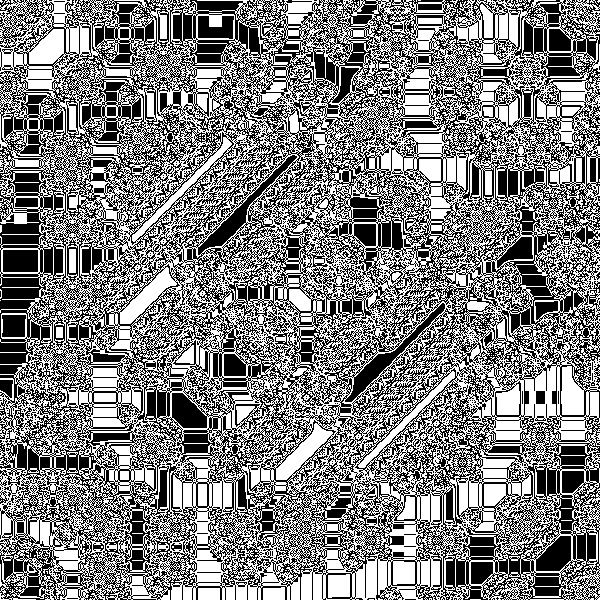
chapter2.1_radius001,3pix_frame_15of494_croped_to_600x600pix
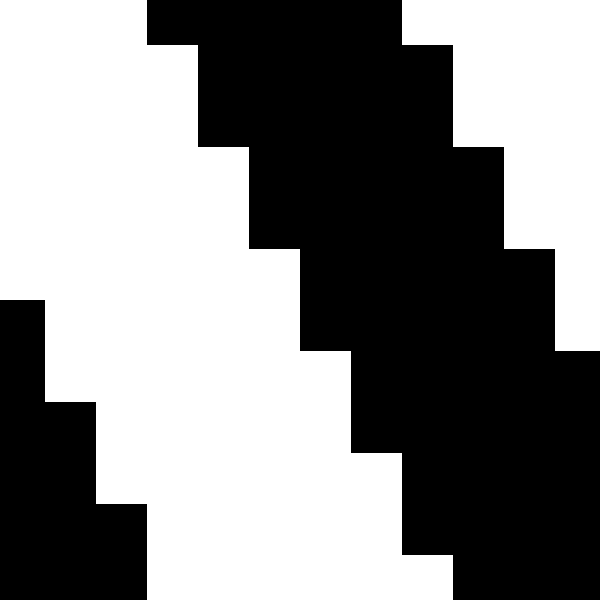
chapter2.1_radius005,1pix_frame_0of3596_croped_to_600x600pix

chapter2.1_radius005,1pix_frame_6of3596_croped_to_600x600pix
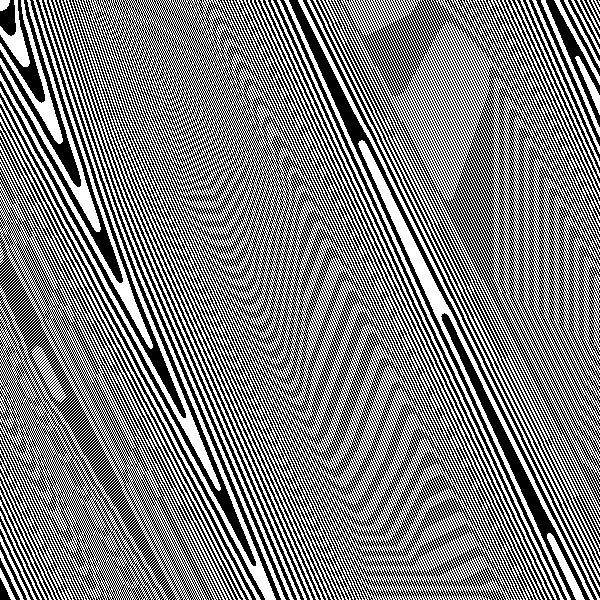
chapter2.1_radius005,1pix_frame_454of3596_croped_to_600x600pix

chapter2.1_radius005,1pix_frame_1075of3596_croped_to_600x600pix
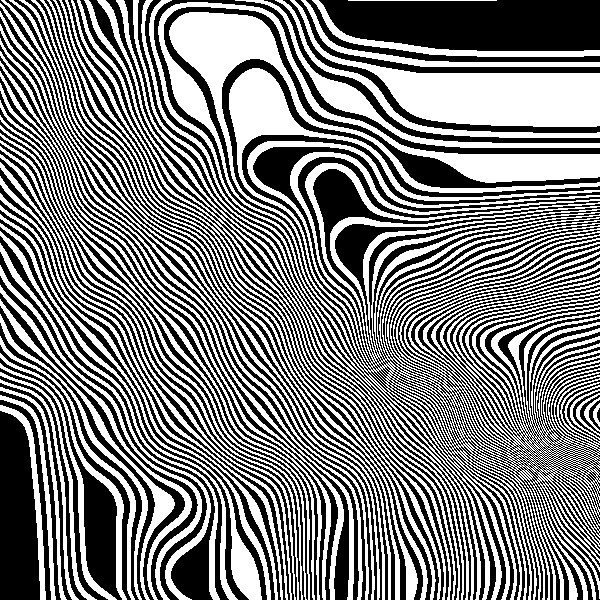
chapter2.1_radius007,9pix_frame_9of772_croped_to_600x600pix
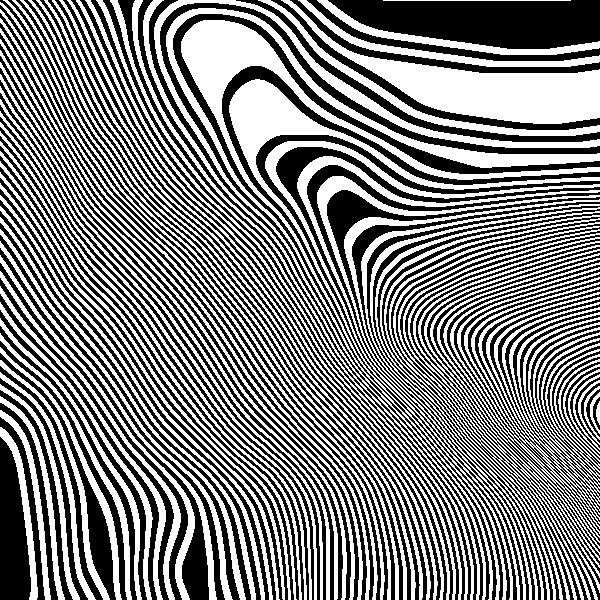
chapter2.1_radius007,9pix_frame_21of772_croped_to_600x600pix
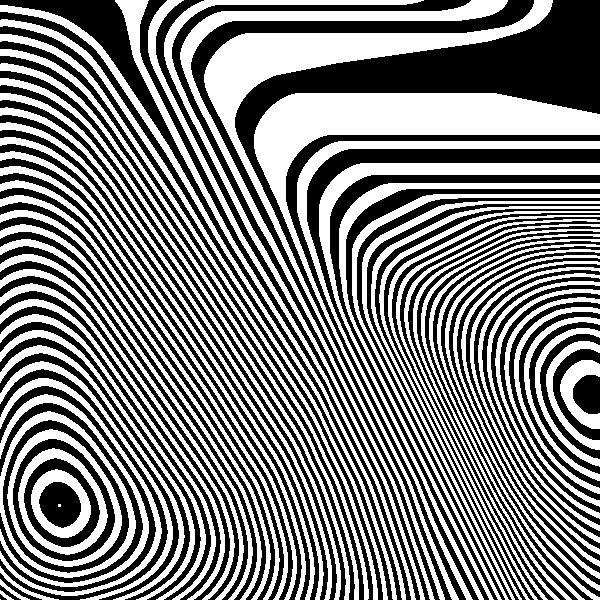
chapter2.1_radius007,9pix_frame_195of772_croped_to_600x600pix

chapter2.1_radius007,9pix_frame_772of772_croped_to_600x600pix
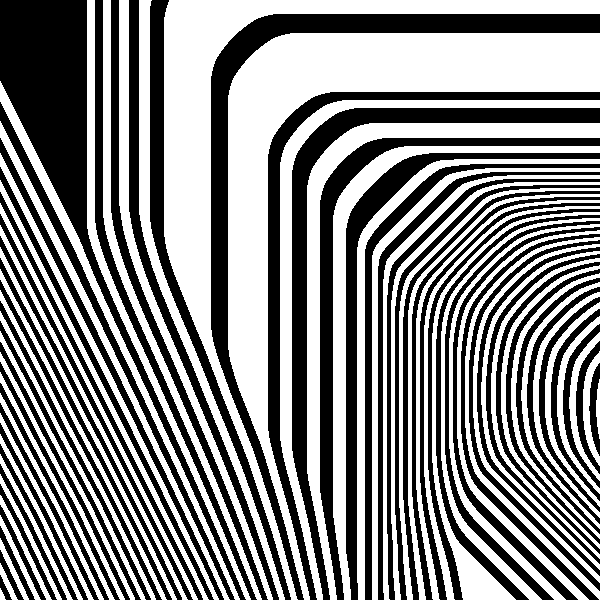
chapter2.1_radius010,0pix_frame_272of1340_croped_to_600x600pix
Chapter 3
The 3rd chapter is in progress.
The Blurve algorithm transforms bitmap extracted from the statistics of the 2nd chapter but it run as an interactive three-dimensional sculpture, that is built with animation's frames as a contours.
The sound
It is expected to have a sound as a integral part of the project. It means that the image will be translate into music based on numbers from statistics of the animation. It comtains histograms, bitmaps, number of frames, dynamics, etc.
The Blurve algorithm's reference
My field of interst in computer-generated graphic is wider.


